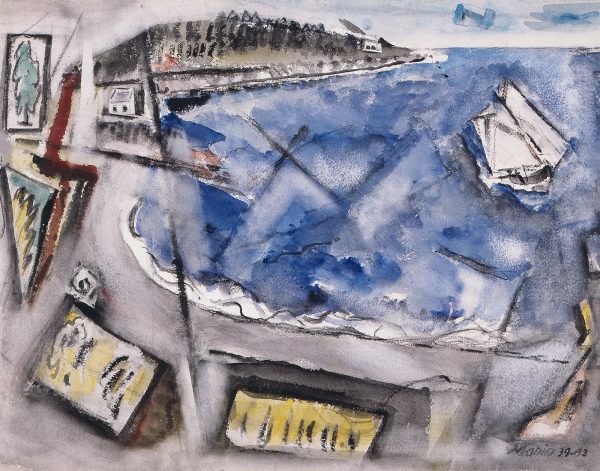
Cape Split
Marin, John
1939–42
Artwork Information
-
Title:
Cape Split
-
Artist:
Marin, John
-
Artist Bio:
American, 1870–1953
-
Date:
1939–42
-
Medium:
Watercolor on paper
-
Dimensions:
21 5/8 x 27 1/2 in.
-
Credit Line:
Wichita Art Museum, Roland P. Murdock Collection
-
Object Number:
M136.55
-
Display:
Not Currently on Display
About the Artwork
Pioneer American modernist John Marin was the preeminent American water-colorist of the twentieth century. Although he produced significant works in oil and print media, he found his deepest affinity of spirit to be with watercolor, a medium whose capacity for fluid, direct execution satisfied the modernist’s desire for liberation of feeling and form. Marin, like so many others of America’s early twentieth century cultural avant-garde, participated in a fervent pantheistic appreciation of nature, a perception of the universal that intermingled with affection for native landscapes.
During his career Marin depicted mountains, forests, and desert, but of all-natural settings, he was most attracted to the sea. Beginning in 1914, Marin spent all of his summers in Maine on the coast, first in Stonington close to Deer Island, and then from 1933 to his death, he summered at Cape Split, in South Addison. He bought a house on a promontory from which he could view the sea or drive his motor boat around to nearby islands. This image titled Cape Split is one of many related paintings inspired by the environs of Marin’s beloved summer home.
Cape Split exhibits the compositional qualities that constitute Marin’s signature style as well as the emotional tone of light buoyant exhilaration that distinguished his sense of life and art. An improvisational rhythmic movement disposes the simplified natural shapes, cubic fragments, and transparent colors across the planar surface. Playing against this surface motion is a secondary rhythm of changing perspective views from aerial to profile, and from curves into the distance to angles striking the foreground. Free-floating black lines, forms created by blotted color; patches of raw white paper, motifs of tree, boat, or house outlined in geometric figures, concentrated patterns of brush stokes, and isolated eccentric shapes all seem to hover in an atmosphere of moist air that becomes increasingly open as it approaches the edges of the picture plane.